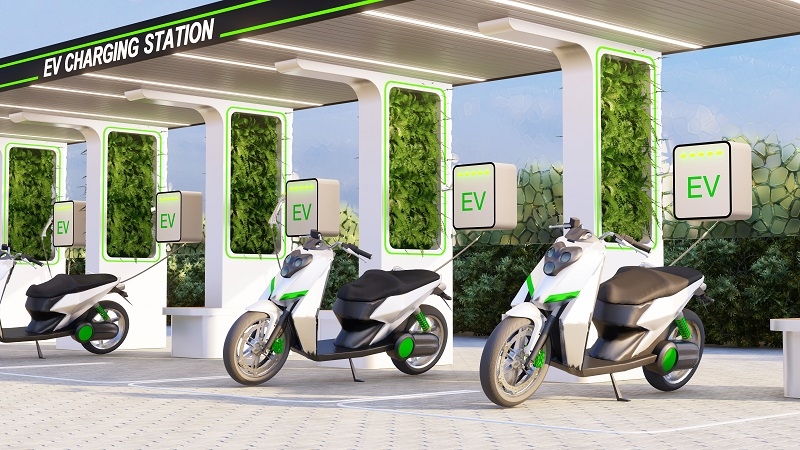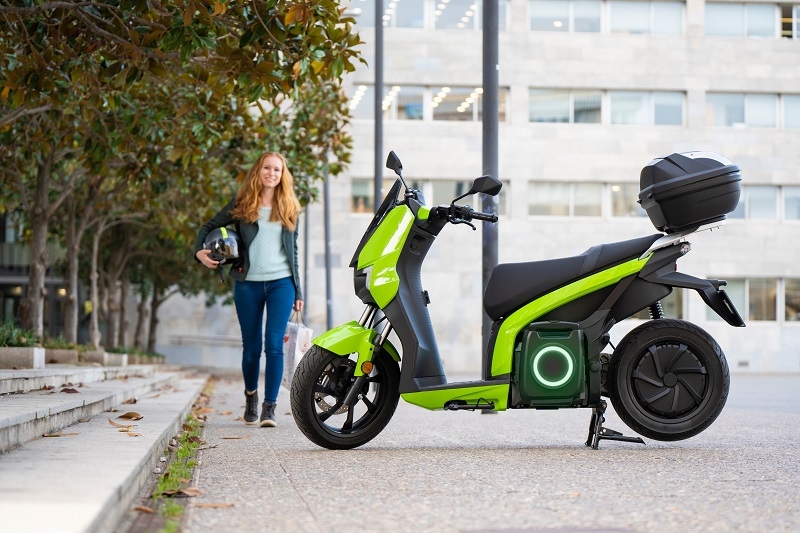
The Zero SR/F revolutionizes electric motorcycles with instant torque, intelligent technology, and real-world highway capability. It's both capable and practical and purpose-built for daily riding and high-speed travel. This article explains how the SR/F performs on American roads, from range and comfort to charging and ride experience, to assist riders in making informed judgments about real-world capability.
The Zero SR/F doesn't resemble an electric motorcycle. It resembles a sinister naked sportbike—something that, in your head, you'd associate with a high-end gas-powered marque. Sinuous lines, huge front forks, and a stumpy rear section are all cues of muscular posturing. Matte-finish plastics, an open frame, and a neatly integrated battery pack create a sense of futurism.
The cockpit features a 5-inch full-color TFT display that displays critical information such as speed, battery charge level, ride modes, and connectivity. Balancing your phone with the motorcycle opens up a range of features in the Zero app, from remote diagnostics and GPS location tracking to personalized ride profiles.
The instant we got the SR/F on the highway, its qualities were ruthlessly apparent. The electric motor puts down 110 hp and 140 lb-ft of torque, available right now. There's no waiting for the powerband—just instantaneous acceleration from the instant you twist the throttle.
At 65–80 mph, the SR/F highway ride is smooth and assured. Merging onto heavy, high-speed interstates and passing big-rig trucks was quick and effortless. Frame geometry and weight distribution provide a solid, stable ride at high speeds.
Showa provides the suspension, and it is a little stiffer but takes poorly paved highway segments well. Not having a windscreen will expose you to greater air pressure on the highway, but it's not intrusive to the typical rider.
Real-world range is an issue when electric motorbikes are considered. As per Zero, the Zero SR/F electric range USA values are approximately 161 miles city riding, 99 miles mixed, and 82 miles highway riding.
On our test ride, we traveled about 80 miles at steady speeds on significant US highways, and the battery had approximately 5% remaining charge. Therefore, the highway range estimate was very accurate.
Range will differ depending on how aggressively you ride, terrain, wind drag, and whether you are using features such as heated grips or phone charging.
One area where electric bikes remain short is in charging time. Zero SR/F charging time varies based on whether you're using the standard 3kW onboard charger, the available 6kW add-on, or the Charge Tank accessory.
You can charge 0% to 95% on a Level 2 charger, and the 6kW installation takes around 90 minutes. The default 3kW system will do the same in around 4 hours. We charged along the way using a public Level 2 charger and topped off 70% in less than an hour.
Level 1 (charge point in a normal wall socket) charging can be done, but it is 8–9 hours in duration and therefore best for overnight top-ups at home.
For everyday commuting, the overwhelming majority of riders will find overnight charging plenty enough.
In spite of its radical styling, the SR/F is surprisingly comfortable for extended highway cruises. The fairly upright riding position, wide handlebars, and short rear-set foot pegs form a natural riding triangle. As a reference point, our test rider was 6'0" tall, and ergonomics were comfortable for several two-hour stretches.
The seat is hard but well-shaped. Not a great touring saddle, to be sure, but it gives sufficient support not to cause long-term discomfort. You don't get engine heat on your legs, either, as tends to happen with gas-powered bikes in stop-and-go or high-temperature use.
Cornering was alert and fine. Because of the low ground clearance and such instant torque, the bike pulls itself out of corners confidently.
Being an American commuter electric motorcycle, the SR/F shines brightest perhaps in this department. On urban and suburban roads, the bike seems to be in its natural habitat. The fact that you never need to shift means stop-and-go traffic isn't as nerve-wracking, and the quiet ride is quieter than from a sportbike you might expect.
You have a range of ride modes to select from—Eco, Street, Sport, and Rain—who control such things on the bike as power delivery, regenerative braking, and throttle sensitivity. Street mode gave the optimal balance of power and efficiency for urban riding.
The SR/F has some convenient creature comforts such as cruise control, heated grips on certain trims, and smartphone connectivity for ride data display and discovering nearby charging stations.

Zero's phone app is perhaps the largest feature that enhances the riding experience. It enables you to monitor charging status, trip information, and even stolen bike alerts in real-time. You can even adjust your ride modes via the app itself.
For inexperienced electric bike riders, having the capacity to configure regenerative braking settings and throttle response is invaluable. You can configure the bike to feel like a vintage gas motorcycle or optimize energy recovery within your tolerance.
One of the greatest financial benefits of the SR/F is that it needs little in the way of maintenance. Electric bikes have less in motion than their internal combustion engine counterparts, so there are fewer things to wear out or break.
No oil to replace, no clutch, no air filters, and the belt drive system is clean and low maintenance. Tires and brakes are your primary wear items.
While the upfront cost is likely to be in the $20,000 category, with accessories, long-term servicing, oil, and gas savings can pay the difference for enthusiasts who are serious about it.
The SR/F is a fantastic motorcycle, but it has its drawbacks:
However, for tech-savvy, eco-conscious riders, these drawbacks are outweighed by the daily usability and performance benefits.
Here are some Quick Tips for Prospective SR/F Riders:
The Zero SR/F isn't just a look ahead to motorcycling's future—it's a sensibly practical and realistic motorcycle for the present. Whether commuting across US suburbs, running weekend highway cruise miles, or just skirting over nearby backroads, this bike provides an electric experience that doesn't spare thrills or practicality.
From SR/F highway performance to its convenient tech package, it's a bike built for today's roads and riders. It's not for everyone, but for the correct rider, the Zero SR/F could be the ultimate U.S. commuter electric bike—and much more in addition to this electric sportbike review US.
This content was created by AI